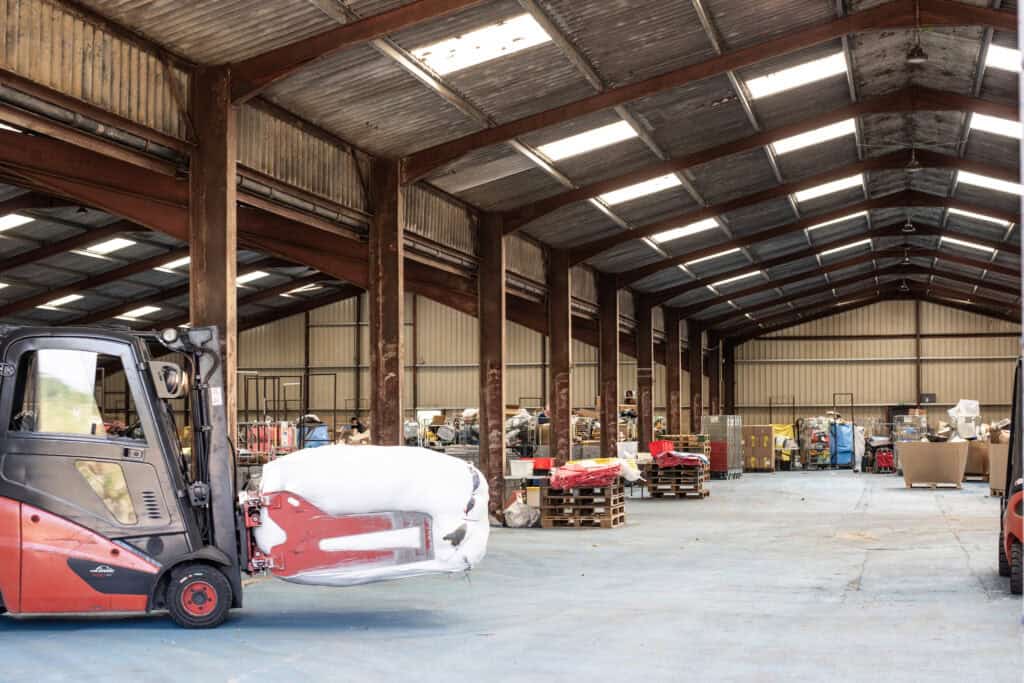How to Reduce Your Fashion Footprint
The fashion industry is one of the largest contributors to environmental damage, with fast fashion driving excessive waste, carbon emissions, and unethical labour practices. However, by making more sustainable choices, you can help minimise your fashion footprint and support a more ethical industry. Here are some practical steps to get started.
1. Choose Sustainable Brands
Opting for fashion brands that prioritise sustainability can significantly reduce your impact on the environment. Many companies now focus on ethical sourcing, fair wages, and eco-friendly materials. Look for brands that use organic cotton, recycled fabrics, or innovative materials such as bamboo or hemp. Certifications like Fairtrade, GOTS (Global Organic Textile Standard), and B Corp can also indicate a brand’s commitment to sustainability.
2. Buy Second-hand and Swap Clothes
Charity shops, vintage boutiques, and online resale platforms make it easy to buy second-hand clothing. Purchasing pre-loved items not only extends the lifespan of garments but also reduces demand for new production. Clothing swaps are another fantastic way to refresh your wardrobe without spending money or contributing to waste. Check out local swap events or organise one with friends and family.
3. Donate Your Unwanted Clothes
If you have clothes you no longer wear, consider donating them instead of throwing them away. Many charities and organisations, such as Anglo Doorstep Collections, collect unwanted clothing to be reused or recycled. Ensuring your clothes are clean and in good condition before donating makes them more useful to those in need. Suppose you are unable to wait for a collection date with Anglo Doorstep Collections and want somewhere to take the items. There are other options, you can take your clothes to these drop-off points, if you want to donate them drop them here The Donation Hub or if you would like some cash for your unwanted items take them to Worth its Weight. Both of these places are open 7 days a week and accept a range of items.
4. Invest in Quality, Not Quantity
Fast fashion promotes disposable clothing, with cheaply made items falling apart after just a few wears. Investing in well-made, timeless pieces means you’ll buy less in the long run, reducing textile waste and saving money. Classic staples like a good-quality coat, durable jeans, and versatile shirts will last for years and stay stylish regardless of trends.
5. Take Care of Your Clothes
Looking after your clothes properly extends their lifespan. Washing at lower temperatures, air drying instead of using a tumble dryer, and using eco-friendly detergents all help to reduce environmental impact. Mending small rips, replacing buttons, or getting shoes resoled are easy ways to keep your wardrobe in good condition for longer.
6. Rent Clothes for Special Occasions
Instead of buying an outfit you’ll only wear once, consider renting clothing for weddings, parties, or formal events. Many rental services now offer high-end fashion at a fraction of the retail price, making it both an economical and sustainable choice. This reduces demand for one-off purchases that contribute to textile waste.
7. Support Ethical Fashion Initiatives
Movements like Fashion Revolution encourage consumers to ask brands, “Who made my clothes?” and demand greater transparency. Engaging with sustainable fashion campaigns, signing petitions, and supporting ethical policies can help drive industry-wide change. Following eco-conscious influencers and reading up on ethical fashion can also help you stay informed.
8. Reduce Online Shopping and Returns
Online shopping often results in excessive packaging waste and carbon emissions from shipping. High return rates further increase the environmental impact, as many returned items end up in landfills. To shop more sustainably, check sizing guides carefully, read reviews, and only purchase items you truly need. Choosing slower, more sustainable delivery options can also help minimise emissions.


9. Educate Yourself and Others
Learning more about the impact of fashion on the planet can help you make better choices. Share information with friends and family to encourage sustainable habits. Documentaries, books, and online resources can provide insights into how the fashion industry operates and what you can do to support change.
10. Advocate for Sustainable Policies
Supporting policies that promote sustainability in the fashion industry can lead to systemic improvements. This includes government regulations on waste, incentives for textile recycling, and stricter environmental standards for production. Writing to your local MP, signing petitions, or supporting brands that advocate for change can all make a difference.
By making small but significant changes, you can reduce your fashion footprint and contribute to a more ethical and sustainable industry. Every conscious choice you make helps protect the planet and supports a fairer future for garment workers worldwide.
Ready to take action? Start by clearing out your wardrobe sustainably and donating your unwanted clothes today!
Book Your Book Collection